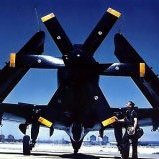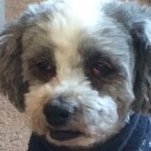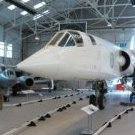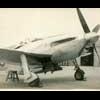-
Posts
72 -
Joined
-
Last visited
About David E. Brown
- Birthday 14/01/1956
Contact Methods
-
Website URL
http://www.stormbirds.com/experten
-
ICQ
0
Profile Information
-
Gender
Male
-
Location
Bedford, Nova Scotia, Canada
-
Interests
Luftwaffe camouflage and markings focusing on mid- to late-war fighters, bombers and nightfighters especially the evolution of colours and their use. Aircraft such as the Fw 190, Bf 109, Me 262, Ju 88 G-series, Ju 87 G series, He 219, Hs 129.
Recent Profile Visitors
2,812 profile views
David E. Brown's Achievements

New Member (2/9)
222
Reputation
-
David E. Brown started following It's this Bf109K-4 color photo legitimate? , Please Delete and RCAF FW190F-8 Correct Colours Please
-
Looking at the top photos of the subject aircraft I see no evidence of a white outline on the number ‘2’ so concur with its identification as being ‘Black 2+-‘ of 6./JG 52. Best, David
-
If the number ‘2’ was outlined in white then in all probability it was coloured RLM 24 blue (8. Staffel) to differentiate it from 6. Staffel machines that had simple (not outlined) black numbers. Aircraft from the 5. (white) and 7. (yellow) Staffeln likewise had simple numbers. Best, David
-
Gents, Just to put things into perspective, I wrote that article 28 years ago in 1997 utilizing all available information (publications, documents, discussions with various researchers, etc.). We have come a long way since then. David
-
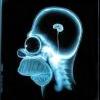
Colour of late war Bf-109 main gear legs?
David E. Brown replied to Tomas Enerdal's topic in Aircraft WWII
Gents, I would argue that the underside panel for the Rb 50/30 camera is on the ground under the fuselage. Best, David. -
Gents, I went through my files and found that I had more information on this machine. The attached image is a scan of a document with photos sent to one of our local aviation museums. The Shearwater Aviation Museum’s focus is Canadian naval aviation history but the following interesting item ended up there (one never knows where odd but important things can be found). The image and letter are self-explanatory. Note that I do not use an image-hosting service but did post this and related information on the LRG in 2023. The item was a letter to the museum from the Royal Canadian Air Force Association with photos of “YO” and a near identical one of “Red 25” in its Luftwaffe camouflage and markings - compare and contrast. The writer – Mr. William E. Smith of Amherst Nova Scotia - donated photos and flare pistol to the museum, and in his letter stated: “Near the end of WW II, I was stationed at Wunstorf, Germany with the [RCAF] 401 Squadron. On the last day of the war, a German Focke-Wulf 109 [sic] approached the airfield and began circling. The Control Tower notified the R.A.F. Ground Forces and personnel armed with rifles and bayonets were alerted. It was then determined the Pilot wished to surrender. The tower realized this and signaled the Aircraft to land. The pilot landed and was taken away by the R.A.F. Ground Forces. I was able to board the aircraft and found the flare pistol which was the only armament found on the aircraft. These pistols are used to fire different coloured flares, with each one having a different meaning. The two photographs show the aircraft in the Luftwaffe colours and after it was painted by the [RCAF] 401 Squadron with the Roundel on it." I believe that this Fw 190 F-8 was associated with SG 151 as the unit was operating in the region during the last months of the war and was disbanded in Grove and/or Schleswig (per entries in de Zeng and Stankey’s Classic book “Dive Bombers and Ground-Attack Units of the Luftwaffe 1933-1945” (Classic, 2013). Furthermore, other aircraft discovered and photographed in Northern Germany exhibiting the same large size non-outlined numbers belonging to this unit: e.g. Fw 190 F-8 “Red 11” of 2./SG 151 at Fassberg, Fw 190 F-8s “White 25” and White 27” of 1./SG 151, Fw 190 F-8 “Yellow 10” WNr.440382 of 3./SG 151 at Fassberg, etc. There are a number of photos of “Red 25” in its original German markings on the internet and various websites, archives, etc. Regarding its original camouflage, I interpret the main wing colours as RLM 75 Mittelgrau / RLM 81 Dunkelgrun. The tail fin – obviously from a sub-contracting firm - has light mottles probably RLM 82 Hellgrün on an overall RLM 76 base with a simple black outline style swastika. Horizontal stabilizers are a low contrast RLM 74/75 grey combination. The fuselage also appears to have been RLM 74/75. Undersides are RLM 76. So: Fw 190 F-8 coded “Red 25” of 2./SG 151 surrendered at Wunstorf on 8 May 1945 to later become “YO” of RCAF 401 Sq. Best, David PS: If someone who has an image account wants to PM me, I can forward some images to share with members.
-

It's this Bf109K-4 color photo legitimate?
David E. Brown replied to Mycapt65's topic in Aircraft WWII
Guilty as charged. D. -

It's this Bf109K-4 color photo legitimate?
David E. Brown replied to Mycapt65's topic in Aircraft WWII
That light tone on the wings and fuselage appear far too light to be RLM 75. D. -
Gents, In the last few days I wanted to confirm that I had correctly identified the aircraft “White 2” of 1./KG(J) 6 was a K-4. I went through all my files, material sent to me by the JaPo team, and theirs and others’ publications. I am sad to say that the machine in question was not a K-4 but instead a G-10 – my bad! I am usually very careful with such things and cannot understand how I missed this. Mea culpa… With the exception of III./KG(J) 54, all Me 262s from III./KG(J) 6 and I./KG(J) 54 reveal consistent RV band and number styles. Photos of Bf 109s of these units indicate that both wore the same colour bands but in different styles, the larger squares probably created to better suit visibility on the narrow tapering fuselage of the Bf 109. KG(J) 27’s aircraft would be expected to follow this pattern and do. Below is a revised compilation of all 27 known Karoband aircraft based on photographic documentation. Note that there are photographs of numerous other aircraft associated with these units that do not wear the assigned fuselage bands. A 28th machine is unconfirmed – see below. UNIT BAND SIZE COLOURS PHOTOS AIRCRAFT CODE WNR. LOCATION KG(J) 6 Stab I./KG(J) 6 large red / black yes Bf 109 G-10 Black <+ ?????? Praha-Kebly, CZ Stab I./KG(J) 6 large red / black yes Bf 109 G-10 Black -+- ?????? Praha-Kebly, CZ 1./I./KG(J) 6 large red / black yes Bf 109 G-10 White 2+ ?????? nr. Praha, CZ 1./I./KG(J) 6 large red / black yes Bf 109 G-10 White 7+ ?????? Praha-Ruzyně, CZ 1./I./KG(J) 6 large red / black yes Bf 109 G-10 White 9+ 130??? Praha-Kebly, CZ 1./I./KG(J) 6 large red / black yes Bf 109 G-10 White 14+ 150??? Bad Aibling, DE 1./I./KG(J) 6 large red / black yes Bf 109 G-10 White 22+ ?????? Bad Aibling, DE 2./I./KG(J) 6 large red / black yes Bf 109 G-10 Black 3+ ?????? Praha-Kebly, CZ 6./II.KG(J) 6 * large red / black NO Bf 109 G-10 Yellow 2+- ?????? Salzburg-Maxglan, OS 7./III./KG(J) 6 small red / black yes Me 262 A-1a White 1+ 501219 Saaz (Žatec), CZ 7./III./KG(J) 6 small red / black yes Me 262 A-1a White _+ 501201 nr. Kladno, CZ 8./III./KG(J) 6 small red / black yes Me 262 A-1a Red 7+ 5012?? Saaz (Žatec), CZ 9./III./KG(J) 6 small red / black yes Me 262 A-1a Yellow 3+ 11095? Saaz (Žatec), CZ 9./III./KG(J) 6 small red / black yes Me 262 A-1a Yellow 5+ 501232 München-Riem, DE KG(J) 27 1./I./KG(J) 27 large green / white yes Bf 109 G-10 White 4+ 46???? nr. Praha-Kebly, CZ 3./I./KG(J) 27 large green / white yes Bf 109 G-10 Yellow 2+ 15???? Kaufbeuren, DE ?./III./KG(J) 27 large green / white yes Fw 190 F-8 Unknown 583577 Raffelding, OS 7./III./KG(J) 27 large green / white yes Fw 190 F-9 White 2+ 206000 Wels, OS 8./III./KG(J) 27 large green / white yes Fw 190 A-9 Black 4+ 207215 Cham-Michelsdorf. DE KG(J) 54 1./I./KG(J) 54 medium blue / white yes Me 262 A B3+ro.HK ?????? Unknown 1./I./KG(J) 54 medium blue / white yes Me 262 A-1a White 1+ ?????? Nasvačily, CZ 1./I./KG(J) 54 medium blue / white yes Me 262 A-1a Black 11+ 111901 Bohemia 2./I./KG(J) 54 small blue / white yes Me 262 A-1a Black 1+ 11???? Saaz (Žatec), CZ 3./I/.KG(J) 54 small blue / white yes Me 262 A-1a Yellow 1+ 11???? _________, OS a) 3./I./KG 51 Me 262 A-2a a) 9K+ge.LL 110662 b) 3./I./KG(J) 54 small blue / white yes " b) Yellow 10+ " c) Ausbild.Kdo. " " " c) Red 3+ " Erding, DE II./KG(J) 54 3./I./KG(J) 54 medium blue / white yes Me 262 A-1a Yellow 2+ ?????? Praha-Ruzyně, CZ 3./I./KG(J) 54 medium blue / white yes Me 262 A-1a Unknown ?????? Unknown 9./III./KG(J) 54 large blue / white yes Me 262 A-1a B3+ge.AT 170305? München-Riem, DE Yellow 3+ * NOTE: This Bf 109 G-10 coded “Yellow 2+-” of 6./KG(J) 6 is claimed to exist via colour photographs in the procession of Jerry Crandall per his statements on Hyper-Scale in June 2004 (http://hsfeatures.com/features04/bf109g10jc_1.htm) and later included as a subject in his EagleCals #80-32 decal sheet. However, in the ensuing 21 years the claimed photos remain unpublished. Therefore, based on the criteria of listing aircraft whose existence can be confirmed photographically, this aircraft is noted as probable / unconfirmed. More information and photos are available in the two-part series on Me 262 units operating in the Protectorate that I co-authored with colleagues at JaPo (Brown et al., 2010; 2012). Summarizing this information by unit: KG(J) 6: 8 x Bf 109 G-10s, 5 x Me 262 As 13 aircraft KG(J) 27: 1 x Fw 190 A-9, 2 x Fw 190 F-8/9, 2 x Bf 109 G-10s 5 aircraft KG(J) 54: 9 x Me 262 As 9 aircraft Summarizing this information by aircraft type: 10 x Bf 109 G-10 1 x Fw 190 A-9 2 x Fw 190 F-8/9 14 x Me 262 A-1/2 Total = 27 aircraft (plus one possible) Best, David References Brown, D.E., Poruba, T. and Vladař, J., 2012 Messerschmitt Me 262 Production & Arado Ar 234 Final Operations – Luftwaffe over Czech Territory 1945 - Volume IV JaPo, Hradec Králové, Czech Republic, 160 p. Brown, D.E., Janda, A. Poruba, T. and Jan Vladař, J., 2010 Messerschmitt Me 262s of KG & KG(J) Units – Luftwaffe over Czech Territory 1945 - Volume III JaPo, Hradec Králové, Czech Republic, 180 p. Crandall, J., 2004 Hasegawa's new 1/32 scale Messerschmitt Bf 109 G-10. Hyper-Scale (Features), 2 June 2004, http://hsfeatures.com/features04/bf109g10jc_1.htm Poruba, T. and Jan Vladař, J., 2017 Messerschmitt Bf 109s of KG(J) 6 – Luftwaffe over Czech Territory 1945 - Volume V. JaPo, Hradec Králové, Czech Republic, 196 p.
-
Ron, Yes, both the first (1997) and the second (2000) versions of the JaPo Bf 109 K books are OOP and expensive in the aftermarket. https://www.largescaleplanes.com/reviews/review.php?rid=290 https://www.japo.eu/products.php?prod=7 However, my understanding is that Kees Mol, one of the original authors, is nearing completion of a revised version of these books. More details when available. Best, David
-
Regarding KG(J) 27 fuselage bands, I detail these in an earlier post in the following thread: My comments on Kampfgeschwader (Jagd) aircraft and markings can be found in this thread: In the above post I note the following regarding these markings’ introduction: “Based on information contained in personal correspondence, publications and articles by S. Radtke, M. Boehme and J. Horn, it appears that the various KG(J) units adopted the fighter-style tactical markings sometime during the March 15 - March 22, 1945 period, with the markings themselves being applied during this time or a little later. Radtke (1990) infers that for I./KG(J) 54 this took place sometime between March 22-26.” Finally, I have identified 28 KG(J) aircraft aircraft based on photographic evidence: KG(J) 6 – 14 KG(J) 27 – 5 KG(J) 54 - 9 This table is not the best formatted but should be usable and details these aircraft: UNIT SIZE COLOURS PHOTOS AIRCRAFT CODE WNR. LOCATION KG(J) 6 Stab I./KG(J) 6 large red / black yes Bf 109 G-10 Black < ?????? Praha-Kebly, CZ Stab I./KG(J) 6 large red / black yes Bf 109 G-10 Black -+- ?????? Praha-Kebly, CZ 1./I./KG(J) 6 large red / black yes Bf 109 K-4 White 2 ?????? Raum Praha, CZ 1./I./KG(J) 6 large red / black yes Bf 109 G-10 White 7 ?????? Praha-Ruzyně, CZ 1./I./KG(J) 6 large red / black yes Bf 109 G-10 White 9 130??? Praha-Kebly, CZ 1./I./KG(J) 6 large red / black yes Bf 109 G-10 White 14 150??? Bad Aibling, DE 1./I./KG(J) 6 large red / black yes Bf 109 G-10 White 22 ?????? Bad Aibling, DE 2./I./KG(J) 6 large red / black yes Bf 109 G-10 Black 3 ?????? Praha-Kebly, CZ 7./III./KG(J) 6 small red / black yes Me 262 A-1a White 1 501219 Saaz (Žatec), CZ 7./III./KG(J) 6 small red / black yes Me 262 A-1a White ? 501201 nr. Kladno, CZ 8./III./KG(J) 6 small red / black yes Me 262 A-1a Red 7 5012?? Saaz (Žatec), CZ 9./III./KG(J) 6 small red / black yes Me 262 A-1a Yellow 3 11095? Saaz (Žatec), CZ 9./III./KG(J) 6 small red / black yes Me 262 A-1a Yellow 5 501232 München-Riem, DE KG(J) 27 1./I./KG(J) 27 large green / white yes Bf 109 G-10 White 4 46???? nr. Praha-Kebly, CZ 3./I./KG(J) 27 large green / white yes Bf 109 G-10 Yellow 2 15???? Kaufbeuren, DE ?./III./KG(J) 27 large green / white yes Fw 190 F-8 unknown 583577 Raffelding, OS ?./III./KG(J) 27 large green / white yes Fw 190 F-9 White 2 206000 Wels, OS ?./III./KG(J) 27 large green / white yes Fw 190 A-9 Black 4 207215 Cham-Michelsdorf. DE KG(J) 54 1./I./KG(J) 54 medium blue / white yes Me 262 A-1a B3+HK ?????? Unknown 1./I./KG(J) 54 medium blue / white yes Me 262 A-1a White 1 ?????? Nasvačily, CZ 1./I./KG(J) 54 medium blue / white yes Me 262 A-1a Black 11 111901 Bohemia 2./I./KG(J) 54 small blue / white yes Me 262 A-1a Black 1 11???? Saaz (Žatec), CZ 3./I/.KG(J) 54 small blue / white yes Me 262 A-1a Yellow 1 11???? _________, OS 3./I./KG 51 n/a n/a no Me 262 A-1a 9K+ge.LL 110662 3./I./KG(J) 54 small blue / white yes " Yellow 10 " Ausbild.Kdo. small blue / white yes " Red 3 " Erding, DE II./KG(J) 54 3./I./KG(J) 54 medium blue / white yes Me 262 A-1a Yellow 2 ?????? Praha-Ruzyně, CZ 3./I./KG(J) 54 medium blue / white yes Me 262 A-1a unknown ?????? Unknown 9./III./KG(J) 54 n/a n/a yes Me 262 A-1a B3+ge.AT 170305? large blue / white yes " Yellow 3 " München-Riem, DE Note that two Me 262s from KG(J) 54 (WNr.110662 and 170305) are known to have had different markings and unit affiliations and are listed for completeness sake. Best, David
-
The machine in question is WNr.160128 coded “G9+HT” of 9./NJG 1. There are additional photos of it on this website, some in colour. A search for “G9+HT” will find the thread. Best, David
- 29 replies
-
- 1
-

-
- Luftwaffe
- Nachtjager
-
(and 1 more)
Tagged with:
-
You need to get access to this book by Martin Simons; “The World's Vintage Sailplanes 1908-45“ (Kookaburra Technical Publications, 1986). It remains has lots of plans and information and is the best primer on all gliders and sailplanes though is out of print and commands very high prices. Best, David
-

Help required with an FW 190 of II/JG 2.
David E. Brown replied to modelling minion's topic in Aircraft WWII
Gents, Does someone have a link to his obituary that they can share in Chat section? David -

What is the oldest thing that you own?
David E. Brown replied to Enzo the Magnificent's topic in Chat
Non-human origin: A sandstone sample from the Flinders Range, Australia that probably contains zircon grains with a radiometric age of about 4.3 billion years old.



